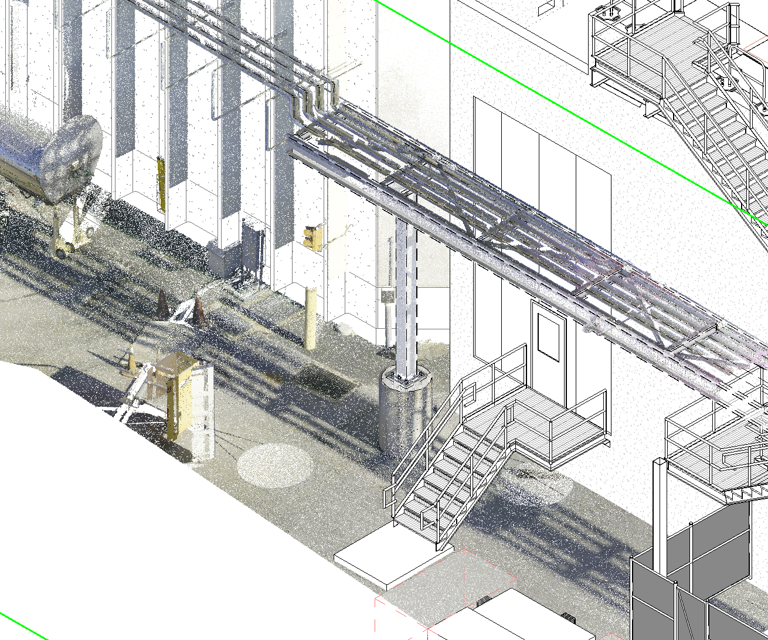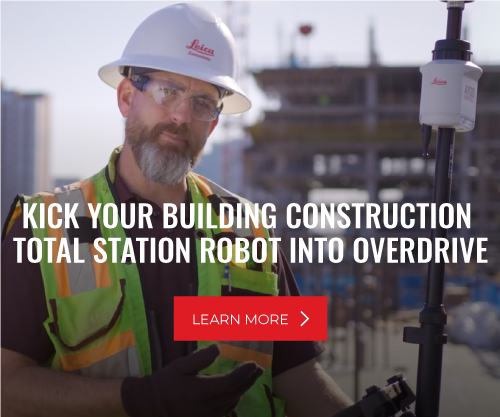The construction industry is rapidly evolving, and data has emerged as a foundational pillar in this transformation. From mitigating risks to improving decision-making and streamlining operations, harnessing the power of data has become a critical strategy for construction teams aiming to improve project outcomes. With modern construction projects generating vast amounts of information, the ability to effectively use this data is key to unlocking workflows that deliver efficiency, accuracy, and collaboration.
“For us, it’s not just about the technology; it’s about how we use the data to drive better decisions and results,” says David Mueller, VDC Manager at Stellar. Through their focus on data integration and innovation, Stellar is demonstrating how leveraging technology leads to better outcomes and seamless project execution.
The Role of Data in Modern Construction
The concept of data-driven construction revolves around leveraging information as a central driver of decision-making and project management. This includes a variety of data sources such as reality capture technologies, BIM (Building Information Modeling), IoT sensors, and construction management platforms. These tools collect and integrate real-world and project-specific information, allowing construction teams to adapt and optimize their workflows in real time.
Mueller describes this process at Stellar in a recent Tech Insider interview: “We’re collecting every piece of information possible, from on-site conditions, as-built verifications, and even progress tracking, all of which feeds into [our tools].” The result is a connected and adaptive approach, where data bridges the gaps between preconstruction, design, and onsite execution, creating an ecosystem that reduces and enhances flexibility.
Stellar’s Data Integration Strategies
At the core of Stellar’s approach is a focus on integrating data from diverse sources to create a cohesive workflow. By combining physical site information and digital models, Stellar ensures that teams are always aligned and informed. Tools such as the Autodesk Construction Cloud, Leica total stations and Leica laser scanners play a key role in consolidating and analyzing this data, facilitating project coordination and accuracy.
“We’re integrating field-collected data directly into our digital workflows so that our designs reflect real-world conditions and our adjustments are immediate,” explains Mueller. Practical examples like scanning existing conditions, creating point clouds, and verifying layouts illustrate how Stellar ensures that all project phases are informed by accurate, up-to-date data. This strategy promotes the creation of a single source of truth, simplifying decision-making and improving collaboration.
“We sat down and looked at what is the best way to make the data flow seamlessly,” Mueller adds. “By ensuring every tool works in harmony, we’re able to streamline processes and bring real-world insights into every stage of a project.”
Benefits of a Data-Driven Approach
Adopting a data-driven construction strategy isn’t just a matter of adopting new tools—it fundamentally enhances how projects are managed. Here are some of the most significant benefits:
- Improved Accuracy
Data forms the foundation for precise project execution. Gone are the days of relying on outdated plans or incomplete site information. “We make data our foundation for peace of mind—knowing everything aligns before moving forward saves time and costs,” shares Mueller. Field-verified data ensures that designs and construction plans reflect on-site realities, minimizing rework and costly errors.

- Enhanced Collaboration
A shared data environment eliminates miscommunication and ensures all stakeholders operate from the same information. Mueller highlights this strength in Stellar’s process: “Our teams see the same data whether they’re standing on-site with a tablet or designing in the office.” By giving equal access to updated models, drawings, and reports, teams in the field and the office can make unified decisions.
- Faster Decision-Making
When teams have access to real-time data, they can respond to changes and challenges much faster. Mueller underscores this advantage, stating, “The ability to adjust based on current conditions and not assumptions makes a major difference.”
- Risk Mitigation
With predictive insights and early detection capabilities, data helps teams identify possible issues before they escalate. “By catching potential errors in the model early based on real-world data, we’re able to save significant costs,” explains Mueller. Whether it’s avoiding clashes in mechanical systems or addressing layout inconsistencies, data empowers teams to proactively handle risks.
Challenges and Solutions
Despite the clear benefits, transitioning to a data-driven construction strategy comes with its own set of challenges. Implementing advanced technologies, ensuring interoperability, and overcoming resistance to change are common hurdles.
For Stellar, addressing these challenges begins with investment in proper training and fostering a mindset of innovation. “The tech is only as good as the teams using it—training is a critical component of what we do,” says Mueller. Ensuring that employees are comfortable using new tools and understanding their value is essential for widespread adoption.
Additionally, leadership plays an important role in navigating these challenges. “Leadership buy-in and a willingness to innovate are essential to navigating the learning curve and realizing the benefits,” emphasizes Mueller. By prioritizing scalable tools, fostering collaboration, and building a strategy rooted in clear objectives, Stellar successfully mitigates these barriers to unlock the full potential of data-driven construction.
Data as the Backbone
Data has become the backbone of modern construction, bringing accuracy, flexibility, and efficiency to workflows that were previously riddled with gaps and inefficiencies. Harnessing the full potential of data empowers teams to not only make better decisions but to also execute projects with confidence and precision.
“At the end of the day, it’s about building the best projects possible—and using data to guide every step gets us there,” says Mueller. With their robust approach to data integration and technology innovation, Stellar is paving the way for seamless project execution.
For construction professionals looking to stay competitive, the message is clear. Investing in data-driven workflows is more than just a technological upgrade—it’s a commitment to higher standards, improved collaboration, and a future of continuous improvement. The time to act is now, and the rewards are well worth the effort.
To discuss your needs with a building construction specialist, contact us.






